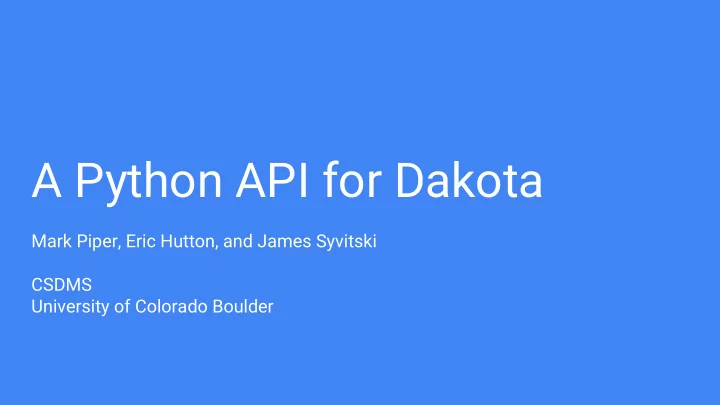

A Python API for Dakota Mark Piper, Eric Hutton, and James Syvitski CSDMS University of Colorado Boulder
Agenda ● Uncertainty quantification ● Dakota The CSDMS Dakota Interface (a.k.a. Dakotathon) ● An experiment ● ● Summary and future work
(image courtesy J. Adam Stephens and Laura Swiler, SNL)
dakotathon
Given uncertain T and P, what’s the likelihood of the Waipaoa producing hyperpycnal plumes? Mulder et al. (2003)
An experiment https://github.com/mdpiper/AGU-2016 ● 1000-yr Hydrotrend runs with defaults, except for T and P, which are uniformly distributed about ±10% from default values, and L = 3.0 100 samples from T-P parameter space are selected using LHS ● Count of daily output C s > 40 kg m -3 is the response statistic ● Use moments, correlations, PDF, and CDF to assess RI ●
RI = 8.4 ± 0.4 yr
https://github.com/csdms/dakota
Summary ● Uncertainty quantification is vital for communicating model predictions to policymakers and to the public Dakota is powerful, but it requires user code to interface with a model ● ● Dakotathon presents an easier-to-use Python interface
Future work ● Expose more Dakota analysis techniques Incorporate Dakotathon into the CSDMS Web Modeling Tool, WMT ● ● Perform a sensitivity study on Hydrotrend’s L
Thank you! Dakotathon https://github.com/csdms/dakota Experiments https://github.com/mdpiper/AGU-2016 Email mark.piper@colorado.edu GitHub, Twitter @mdpiper
Recommend
More recommend